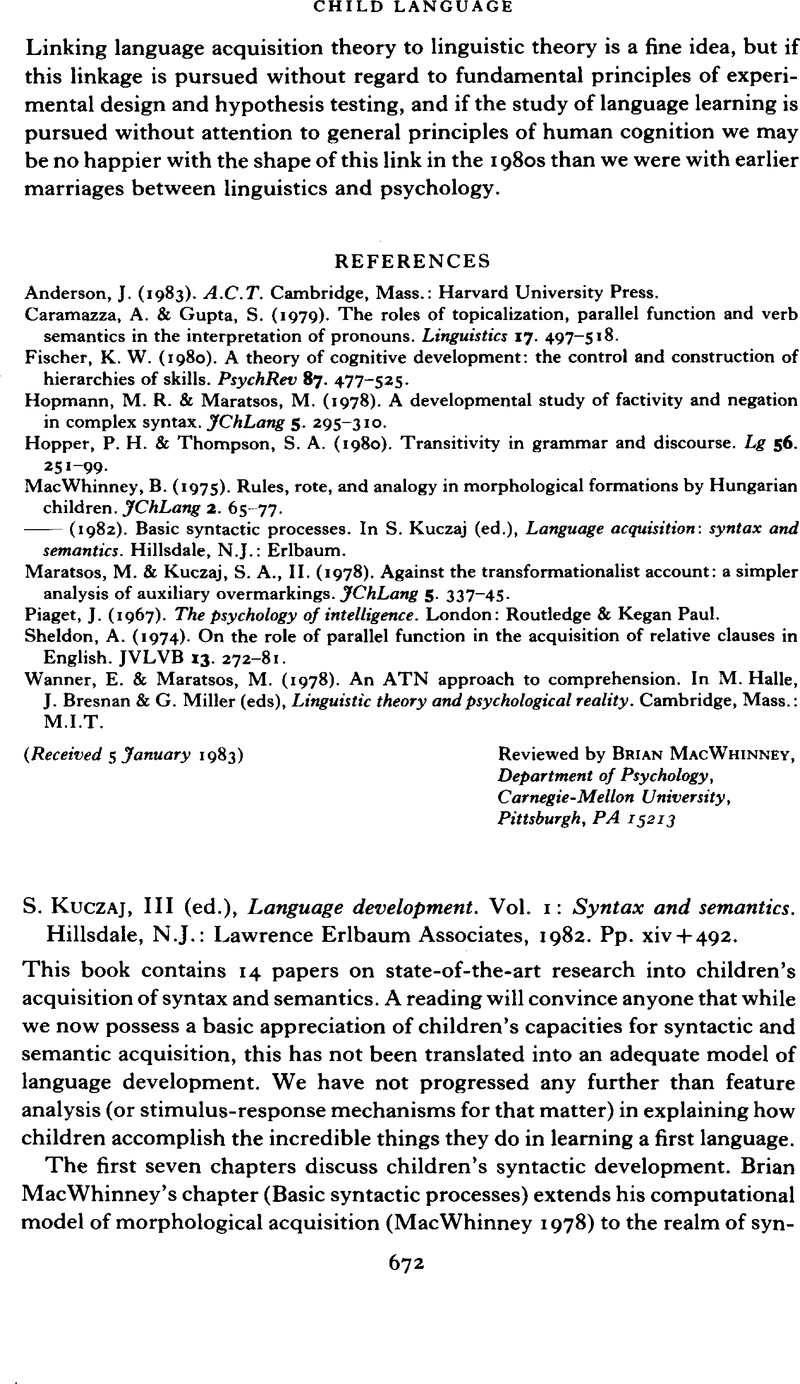No CrossRef data available.
Article contents
Published online by Cambridge University Press: 26 September 2008
Abstract
An abstract is not available for this content so a preview has been provided. Please use the Get access link above for information on how to access this content.

- Type
- Reviews
- Information
- Copyright
- Copyright © Cambridge University Press 1983
References
REFERENCES
Hubel, D. H. & Wiesel, T. N. (1962). Receptive fields, binocular interaction and functional architecture in the cat's visual cortex. JPhysiol 160. 106–54.Google ScholarPubMed
Lettvin, J. Y., Maturana, H. R., McCulloch, W. S. & Pitts, W. H. (1959). What the frog's eye tells the frog's brain. ProcInstRadioEngr 47. 1940–1951.Google Scholar
MacWhinney, B. (1978). The acquisition of morphophonology. Monogr. Soc. Res. Ch. Devel. 43 (Nos. 1–2).Google Scholar
Minsky, M. & Papert, S. (1969). Perceptrons: an introduction to computational geometry. Cambridge, Mass.: M.I.T.Google Scholar
Partee, B. H. (1981). Montague grammar, mental representations, and reality. In Kanger, S. & Öhman, S. (eds), Philosophy and grammar: papers on the occasion of the quincentennial of Uppsala University. Dordrecht: Reidel.Google Scholar
Richards, M. P. M. (ed.) (1974). The integration of a child into a social world. Cambridge: CUP.Google Scholar


